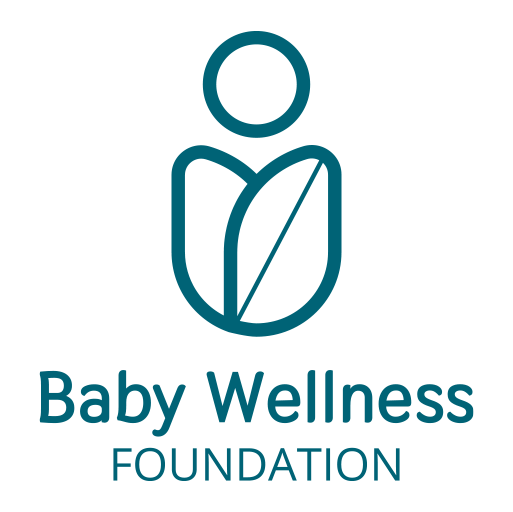Approfondimenti scientifici
Positional plagiocephaly in infants: prevention and best practices for harmonious cranial development

Newborn health is one of the foundational pillars of the Baby Wellness principle, which promotes the child’s overall well-being from the very first days of life. Among the conditions that may appear in the early months, positional plagiocephaly—commonly known as “flat head syndrome”—is particularly widespread today, often as a consequence of the correct medical recommendations for the prevention of SIDS (Sudden Infant Death Syndrome).
Why does plagiocephaly occur?
After birth, a newborn spends most of their time lying on their back. While this position is essential for reducing the risk of SIDS, it can, in some cases, lead to cranial deformities due to prolonged pressure on the same area of the skull.
In the early months of life, the infant’s cranial bones are soft and easily moldable—a physiological characteristic that facilitates passage through the birth canal but also makes them vulnerable to postural deformation.
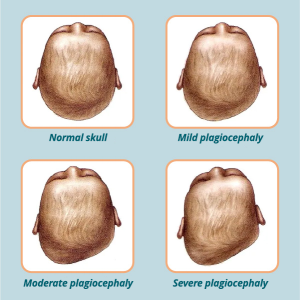
Types of positional cranial deformities
The term “plagiocephaly” is commonly used to describe a range of positional skull irregularities in infants. The most common types include:
- Plagiocephaly: the most common form of flat head, it occurs when a flat spot develops on one side of the head. This can lead to an uneven and asymmetric appearance of the skull and face.
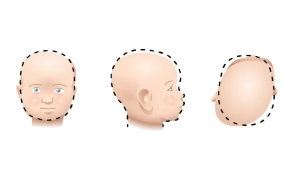
-
Brachycephaly: characterized by a flat spot on the back of the head. Infants with brachycephaly often have unusually wide and high heads, protruding ears, and a face that appears small in proportion to the head.
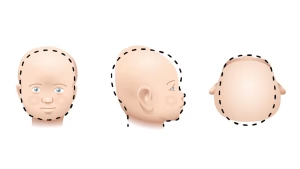
-
Scaphocephaly: occurs when an infant spends long periods sleeping on their side. This results in an unusually long and narrow head shape.
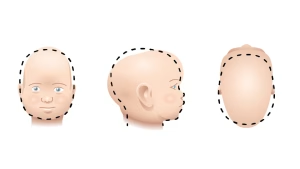
Positional skull deformities are most likely to develop within the first 8 weeks of life. Early monitoring of the infant’s head shape, in collaboration with a pediatrician, is essential for timely intervention while cranial sutures are still soft and malleable.
Prevention and recommended supports
To prevent or correct positional plagiocephaly, several simple strategies can be adopted:
- Choose a semi-rigid mattress with postural support: specially designed devices help distribute head weight evenly and encourage lateral head rotation, preventing fixed positioning.
- Gently rotate the infant’s head during sleep if they tend to turn to the same side.
- Vary the source of visual and auditory stimuli by changing the orientation of the crib or stroller.
- Alternate the arm used during feeding to prevent the baby from consistently turning their head in one direction.

@Inglesina Baby Spa – Welcome Pad
Beneficial motor techniques and stimulations
One of the most effective practices is Tummy Time—placing the baby on their tummy while awake and supervised. Short sessions (10–15 minutes, 2–3 times a day) offer multiple benefits:
- Reduces pressure on the back of the skull
- Strengthens neck and shoulder muscles
- Stimulates free movement and sensory exploration
Other recommended actions include:
- Encouraging frontal eye contact, properly supporting the baby’s head
- Motivating the infant to track the parent’s face or voice with their eyes and head
- Placing the baby tummy-down on a lap or thighs for cuddle time under close supervision
Potential consequences of untreated plagiocephaly
If cranial asymmetry is left untreated, it can lead to:
- Permanent aesthetic asymmetries
- Visual disorders due to poor eye alignment
- Jaw misalignment and difficulties in sucking or chewing
- Increased risk of middle ear infections
- Postural complications, such as trouble maintaining an upright back
Early intervention is essential—preventive and corrective measures should begin in the first few months of life.
Positional plagiocephaly is a common condition, but one that is largely preventable and treatable when approached with awareness and timely action. Proper postural hygiene, targeted ergonomic supports, and early motor stimulation activities can make a significant difference in ensuring healthy and harmonious cranial development.
